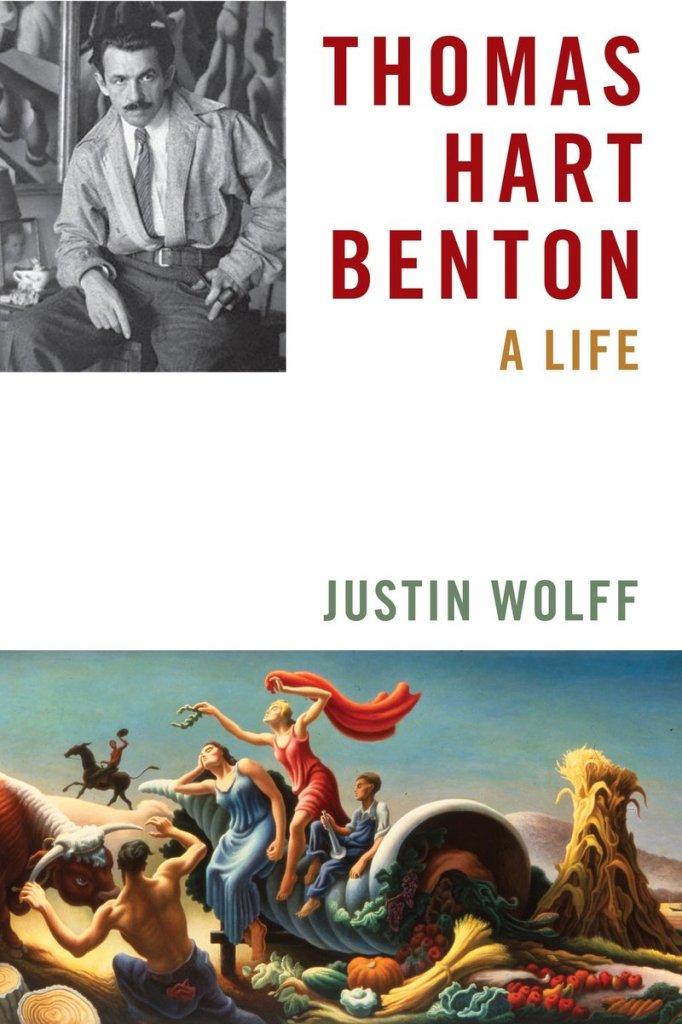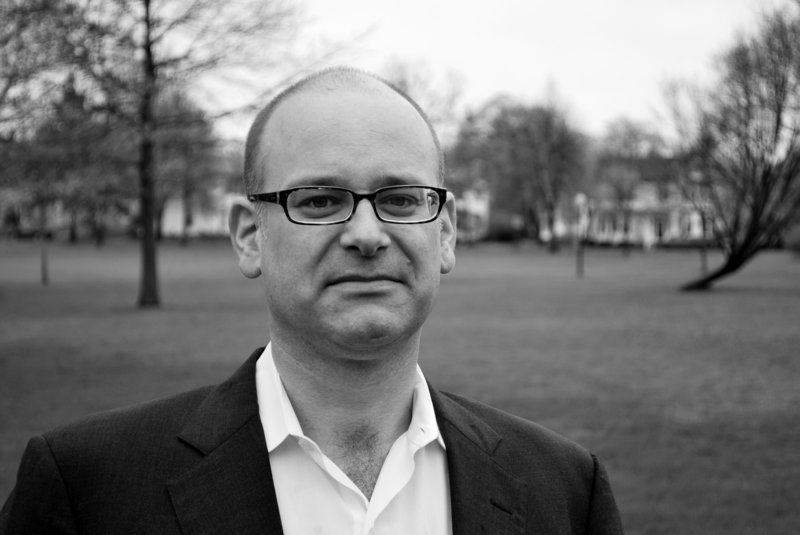Thomas Hart Benton was both notorious and celebrated. He was the first artist to make the cover of Time magazine, but also a crude fellow who delighted in his profanity.
Born and raised in Missouri, Benton rose to the forefront of the regionalist art movement and was best known for his sweeping, sculpted murals of the American working class during the Depression era. Although he was identified for his Midwestern roots, he spent much of his life in New York, and almost every summer from 1920 until his death in 1975 on Martha’s Vineyard in Massachusetts.
Justin Wolff, an assistant professor of art history at the University of Maine in Orono, has written a comprehensive biography of the testy artist.
“Thomas Hart Benton: A Life” is the definitive biography of Benton, who was born in 1889 and died in 1975. Wolff explores all aspects of his life, including Benton’s political family roots, his interest in the arts and the times in which he lived. He offers a compelling portrait of a complicated man.
Q: What made Benton an interesting subject for you? Why did you want to write this book?
A: Benton appeals to my primary interest as an art historian, which is an intersection of art and politics. No modernist American painter represents that better than Benton, coming from a political family. His father was a U.S. congressman, and his great-uncle was a U.S. senator. Politics was his birthright. He believed that art could speak to the political realities of the Depression era.
Benton also embodies a third intellectual interest of mine, which is in populism. I see him as a kindred spirit. Just as Benton tried to bring art out of museums and galleries and the esoteric art world, as an art historian I am interested in making it clear to my students and my readers something very similar: Art is for all of us. It is not a closed or specialized arena.
That is what drew me to him. Having said all that, many things about Benton are unappealing. This book is not a hero quest.
Q: In your prologue, you write, “To view Benton clearly, one must resist the urge to type him and instead simply set him loose on the stage of his times and try to keep up, to trace him as he injures, insults, and delights us.” Now that you have spent a lot of time with him and gotten to know him as well as most people ever will, tell us why he was such a difficult person to nail down and also such an eccentric.
A: Benton demonstrates what all biographers come to know, which is that there is no way to develop a thesis about a life. No life unfolds as clearly as an argument does. Benton came to my consciousness as an undergraduate, and as a graduate student as a caricature. He was a profane, hard-drinking artist. That was an easy image to present and perpetuate. But as I got to know him better, here was a man who was full of contradictions and paradoxes.
He claimed as a young man to desperately want to flee Missouri and get away to the big cities of Chicago, Paris and New York. But the Benton we know was a man who desperately wanted to get out of the big cities and back to Missouri. He claimed to be an anti-intellectual, but was very much an intellectual.
What makes him complex is that he was as inconsistent as we all are. He could say one thing and do another. He could change his beliefs. He had a public persona that contrasted with his private persona. At the end of the day, he is human. It’s the mess and contradictions that make up all of our lives. The biographer’s job is to resist the easy package and instead say, “He was complex.”
But what makes him a difficult personality was that he believed that part of his populism, and one way to connect with the American folk that he was so interested in, was to be crude. But one doesn’t have to be crude to be popular.
For him, crudeness was to try to make people laugh by saying despicable things about women or about museum curators, whom he assumed were all homosexuals, or to reject a French artist because they are associated with the esoteric ideals of French writers. He would say things that were simple, that were crude and that were unthinking. But he knew better. That is why it was very disturbing. He knew better. He was a very smart man.
Q: Benton came of age during a remarkable time in American history, as well as art history. Why did he reject modernism? And why was regionalism so appealing to him?
A: It was populism. He began his career as a modernist painter, and was a student for a long time. When he comes to New York in 1913, he looks around him and says, “How I can make this work?”
He paints abstractly, and makes all kinds of experimental paintings. He becomes conscious of the American landscape and the way people work on the land in Martha’s Vineyard. That was in 1920, and he spent nearly every summer the rest of his life on Martha’s Vineyard. His turn to realism and away from modernism combined his own appreciation for spending time among farmers and fishermen in New England with his reading of Lewis Mumford and John Dewey, who were writing about, as Dewey put it, “the local is the only universal.” That appealed to Benton very much, and he became attuned to regional themes. But what is so interesting is that this happens in New England and not in Missouri.
Q: Why is that so profound? Because he was known as a Midwesterner?
A: Yes, and his roots on Martha’s Vineyard might surprise people. I knew that Benton spent time on Martha’s Vineyard before I started writing this book, but I didn’t know how much it was a part of his regionalist sensibility, how much it was sort of a homestead for him.
There is a compound of houses there, and his daughter still lives there, or spends time there. He was well-known by a lot of folks on the Vineyard. He spent more time there than in Missouri. Maybe if you counted the years, Missouri would win, but it was as much a part of his person and character as the Midwest was.
Q: Did he ever spend time in Maine?
A: Not that I know of. If he visited, I’m not aware of it.
Q: He died in 1975 in the Midwest. He made it home.
A: Yes, he did. He died in his studio in Kansas City. He was working on his final mural about the sources of country music. He put his signature on it, and his wife found him on the floor.
Staff Writer Bob Keyes can be contacted at 791-6457 or:
bkeyes@pressherald.com
Twitter: pphbkeyes
Send questions/comments to the editors.




